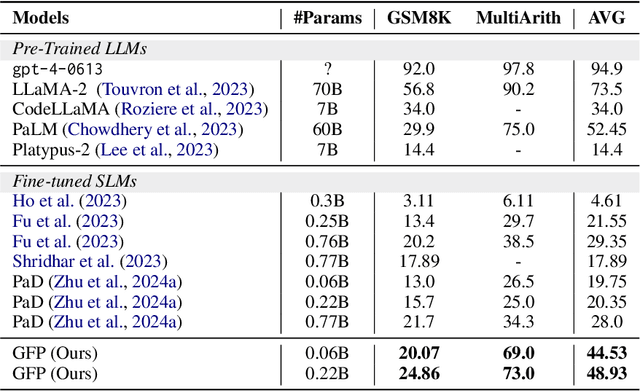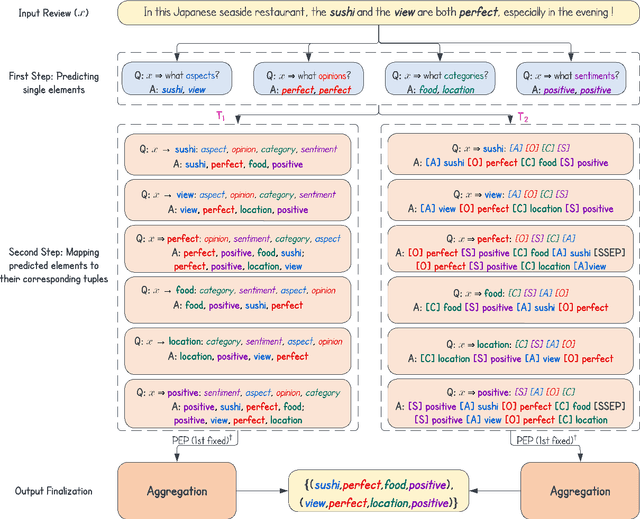Mohammad Ghiasvand Mohammadkhani
Checklist Engineering Empowers Multilingual LLM Judges
Jul 09, 2025Abstract:Automated text evaluation has long been a central issue in Natural Language Processing (NLP). Recently, the field has shifted toward using Large Language Models (LLMs) as evaluators-a trend known as the LLM-as-a-Judge paradigm. While promising and easily adaptable across tasks, this approach has seen limited exploration in multilingual contexts. Existing multilingual studies often rely on proprietary models or require extensive training data for fine-tuning, raising concerns about cost, time, and efficiency. In this paper, we propose Checklist Engineering based LLM-as-a-Judge (CE-Judge), a training-free framework that uses checklist intuition for multilingual evaluation with an open-source model. Experiments across multiple languages and three benchmark datasets, under both pointwise and pairwise settings, show that our method generally surpasses the baselines and performs on par with the GPT-4o model.
Gap-Filling Prompting Enhances Code-Assisted Mathematical Reasoning
Nov 08, 2024

Abstract:Despite the strong performance of large language models (LLMs) in tasks like mathematical reasoning, their practical use is limited by high computational demands and proprietary restrictions. Chain-of-thought (CoT) and program-of-thought (PoT) fine-tuning are common methods to transfer LLM knowledge to small language models (SLMs). However, CoT often leads to calculation errors in SLMs, while PoT has shown more promise. While most PoT-based approaches focus on direct problem-to-code conversion or extracting only the key information from questions and then providing code solution for it, this work emphasizes filling the gaps in the question to clearly illustrate the solution path, which can be challenging for an SLM to understand when such information is not explicitly provided. Therefore, this paper introduces Gap-Filling Prompting (GFP), a novel two-step prompting strategy designed to enhance the problem-solving process for SLMs. The first step identifies these gaps and provides hints for filling them, while the second step adds the hints to the question to generate a final code solution. Experimental results on two benchmark datasets demonstrate that GFP significantly improves the mathematical reasoning abilities of SLMs.
Zero-Shot Learning and Key Points Are All You Need for Automated Fact-Checking
Aug 15, 2024

Abstract:Automated fact-checking is an important task because determining the accurate status of a proposed claim within the vast amount of information available online is a critical challenge. This challenge requires robust evaluation to prevent the spread of false information. Modern large language models (LLMs) have demonstrated high capability in performing a diverse range of Natural Language Processing (NLP) tasks. By utilizing proper prompting strategies, their versatility due to their understanding of large context sizes and zero-shot learning ability enables them to simulate human problem-solving intuition and move towards being an alternative to humans for solving problems. In this work, we introduce a straightforward framework based on Zero-Shot Learning and Key Points (ZSL-KeP) for automated fact-checking, which despite its simplicity, performed well on the AVeriTeC shared task dataset by robustly improving the baseline and achieving 10th place.
E2TP: Element to Tuple Prompting Improves Aspect Sentiment Tuple Prediction
May 10, 2024



Abstract:Generative approaches have significantly influenced Aspect-Based Sentiment Analysis (ABSA), garnering considerable attention. However, existing studies often predict target text components monolithically, neglecting the benefits of utilizing single elements for tuple prediction. In this paper, we introduce Element to Tuple Prompting (E2TP), employing a two-step architecture. The former step focuses on predicting single elements, while the latter step completes the process by mapping these predicted elements to their corresponding tuples. E2TP is inspired by human problem-solving, breaking down tasks into manageable parts, using the first step's output as a guide in the second step. Within this strategy, three types of paradigms, namely E2TP($diet$), E2TP($f_1$), and E2TP($f_2$), are designed to facilitate the training process. Beyond in-domain task-specific experiments, our paper addresses cross-domain scenarios, demonstrating the effectiveness and generalizability of the approach. By conducting a comprehensive analysis on various benchmarks, we show that E2TP achieves new state-of-the-art results in nearly all cases.
 Add to Chrome
Add to Chrome Add to Firefox
Add to Firefox Add to Edge
Add to Edge